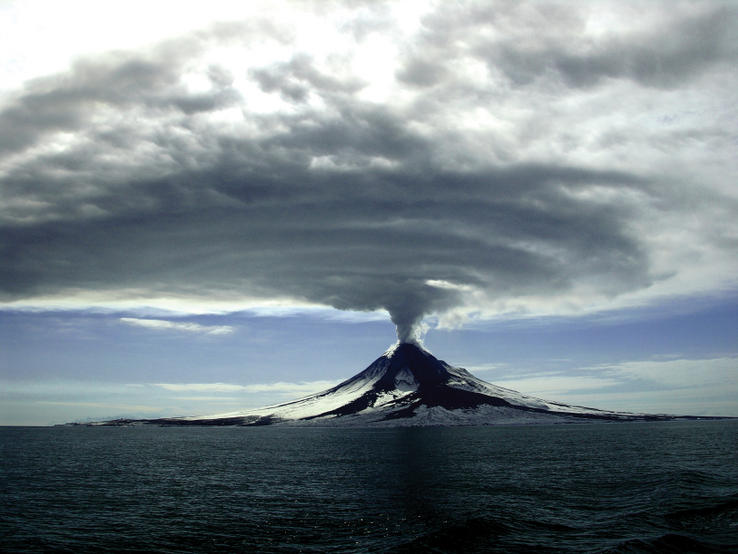
It's Been a Blast! Alaska Volcano Observatory Marks 25th

America's busiest cargo airport is in Anchorage, Alaska, where international flights heading to and from the Far East make frequent stops.
The Alaska Volcano Observatory (AVO), celebrating its 25th anniversary this month, monitors volcanic eruptions that can wreak havoc on the busy air traffic.
For Alaska, a state that depends on air travel for moving people and goods to its far-flung and remote towns and villages, it's critical to know when and where to expect a volcanic plume.
"Since 1988, AVO has responded to over 70 eruptive events from Alaska's 52 historically active volcanoes," John Power, scientist-in-charge of AVO, said in a statement. "Many of these eruptions affected local and international air traffic, oil production, the fishing industry, municipalities, businesses and citizens."
The state's more than 50 active volcanoes have all erupted since 1760, and there are 29 more simmering on Russia's nearby Kamchatka Peninsula. All could belch ash plumes that clog airplane engines.
The Volcano Observatory was created in 1988, two years after the eruption of Augustine volcano, located 175 miles (280 km) southwest of Anchorage, affected the airport and the city of Homer.
On Dec. 14, 1989, the eruption of Mount Redoubt spewed ash 30,000 feet (9,100 meters) into the air. The next day, a KLM passenger plane flew through the cloud and all four engines shut off as the ash burst into flame inside them. The plane dropped 9,800 feet (3,000 m) in four minutes before the engines restarted and the plane landed safely.
Sign up for the Live Science daily newsletter now
Get the world’s most fascinating discoveries delivered straight to your inbox.
When Redoubt erupted again in March 2009, Anchorage's airport was briefly closed. The airport was never officially closed in 1989, but most commercial carriers diverted flights and other airports closed in smaller cities, according to the AVO. Military aircraft at nearby Elmendorf Air Force Base were also shifted to other bases.
At the start, the Volcano Observatory monitored Alaska's most threatening volcanoes: Mount Spurr, Mount Iliamna, Redoubt and Augustine. Over the years, scientists installed seismic monitoring equipment at 32 volcanoes. With the federal budget sequester, they will no longer monitor Little Sitkin, Ukinrek Maars and Ugashik-Peulik volcanoes with real-time equipment, the observatory announced March 26. Just 120 of almost 200 seismic monitors in the state are in working condition, the observatory said in a statement.
Research also includes looking at past eruptions, to see how big and how far past ash and lava traveled, and how frequently the volcanoes exploded. The 1912 Novarupta eruption at Mount Katmai was the largest in the 20th century. [10 Biggest Volcanic Eruptions in History]
Most of Alaska's active volcanoes are strung like jewels along the Aleutian island arc, above a subduction zone. The islands sit above the collision between two of Earth's tectonic plates, where the Pacific plate slides beneath the North American plate into the mantle, the deeper layer beneath the crust. As heat and pressure from the mantle squeeze water out of the Pacific plate, the escaping water helps partially melt the nearby mantle, creating magma that rises to the surface, forming volcanoes.
Email Becky Oskin or follow her @beckyoskin. Follow us @OAPlanet, Facebook or Google+. Original article on LiveScience's OurAmazingPlanet.











